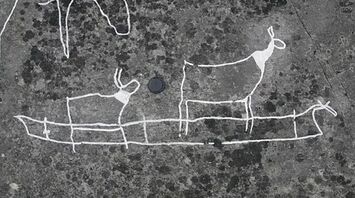Analysis of Ancient Scandinavian Watercraft

Ancient Scandinavians were likely pioneers in using boats made from animal skins for hunting, fishing, and trading around 5,000 years ago. This revelation comes from a study published in the Journal of Maritime Archaeology, which examines the Pitted Ware Culture (PWC), a Neolithic group that lived between 3500 BC and 2300 BC in regions now known as Sweden, Denmark, and Finland.
The PWC, known for its pottery marked by deep pits, adapted a maritime lifestyle by emphasizing seal hunting and fishing while other European societies transitioned to farming. The culture's hallmark pottery vessels bear traces of seal oil, suggesting the use of seals for purposes beyond food, possibly in boat construction and maintenance.
Researchers highlighted that while direct archaeological evidence of these boats is scarce, significant indirect clues exist. These include bone frames purportedly used for the boats, rock art illustrating seal hunting and whaling, and substantial remains of seals at excavation sites. Fashioning boats from seal hides stretched over wooden frames resembles methods used by the Inuit, underscoring the historical feasibility of long sea voyages undertaken by PWC.
Critical findings from the study indicate that these boats needed to be more advanced than simple hollowed-out log canoes, which were unsuitable for open sea travel. Instead, the craftsmanship likely involved schooner-like structures that enabled crossing vast water expanses, such as from Gotland to Åland.

Thus, multiple lines of evidence, such as lipid residues from seal oil in pottery shards, illustrations of structured vessels on rock art, and located animal remains, build a compelling case for ancient Scandinavians' use of skin boats for extensive navigation and trade. However, the natural decay of materials over millennia leaves some details speculative, arousing further curiosity within the field of maritime archaeology.
Earlier, SSP wrote about how synchronized movements strengthened social bonds.



















